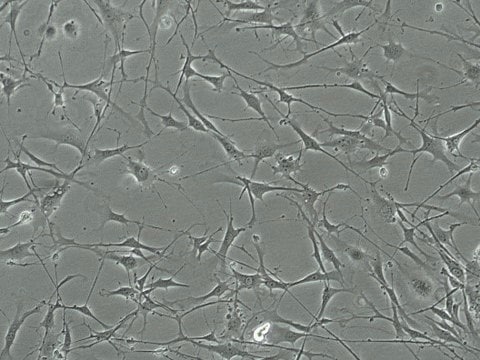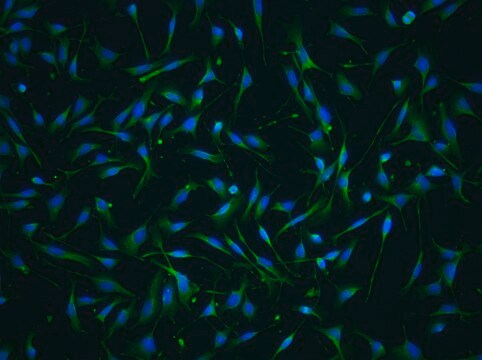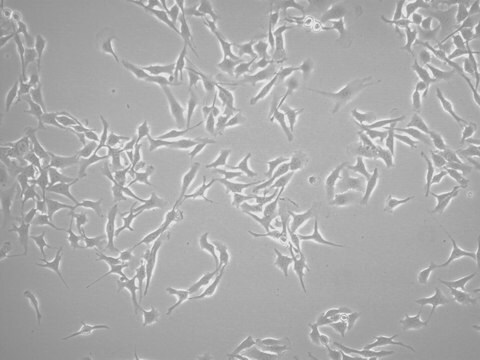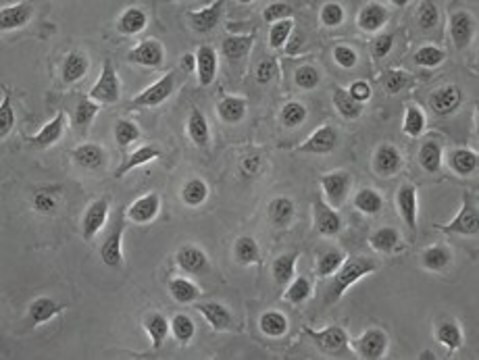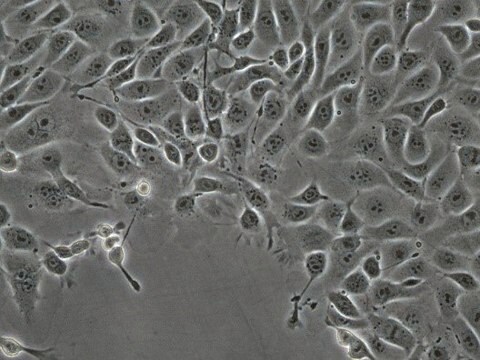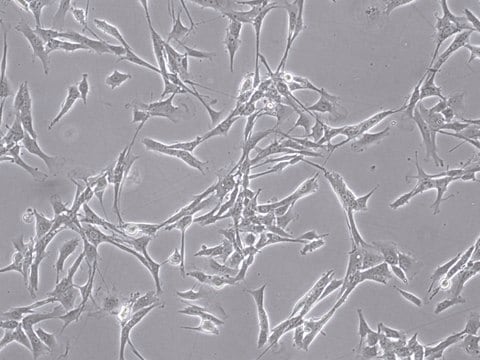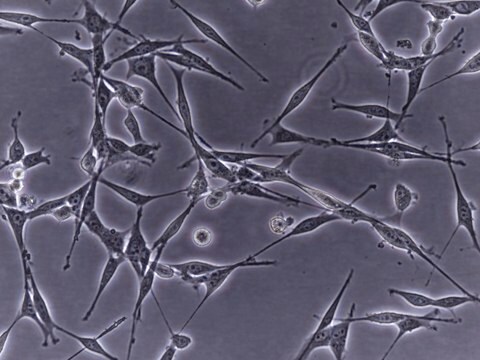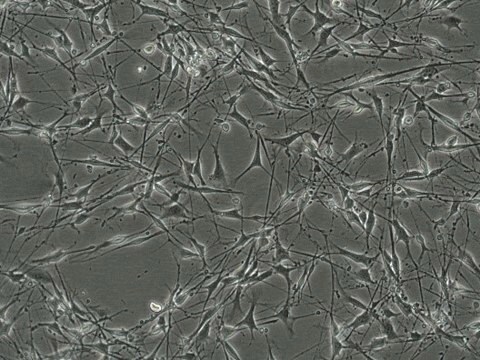SCC235
YUMM3.2 Mouse Melanoma Cell Line
Mouse
Synonym(e):
Yale University Mouse Melanoma 3.2 cell line, Yale University Mouse Melanoma cell line
About This Item
Empfohlene Produkte
Produktbezeichnung
YUMM3.2 Mouse Melanoma Cell Line,
Biologische Quelle
mouse
Qualitätsniveau
Verpackung
vial of ≥1x10^6 vial
Hersteller/Markenname
Millipore
Methode(n)
cell culture | mammalian: suitable
Versandbedingung
liquid nitrogen
Lagertemp.
−196°C
Allgemeine Beschreibung
Anwendung
- Each vial contains > 1X106 viable cells.
- YUMM3.2 cells are tested negative for infectious diseases by a Mouse Essential CLEAR panel by Charles River Animal Diagnostic Services.
- Cells are verified to be of mouse origin and negative for interspecies contamination from rat, chinese hamster, Golden Syrian hamster, human and nonhuman primate (NHP) as assessed by a Contamination CLEAR panel by Charles River Animal Diagnostic Services.
- Cells are negative for mycoplasma contamination.
Leistungsmerkmale und Vorteile
Zielbeschreibung
Lagerung und Haltbarkeit
Sonstige Hinweise
Haftungsausschluss
Lagerklassenschlüssel
12 - Non Combustible Liquids
WGK
WGK 2
Flammpunkt (°F)
Not applicable
Flammpunkt (°C)
Not applicable
Analysenzertifikate (COA)
Suchen Sie nach Analysenzertifikate (COA), indem Sie die Lot-/Chargennummer des Produkts eingeben. Lot- und Chargennummern sind auf dem Produktetikett hinter den Wörtern ‘Lot’ oder ‘Batch’ (Lot oder Charge) zu finden.
Besitzen Sie dieses Produkt bereits?
In der Dokumentenbibliothek finden Sie die Dokumentation zu den Produkten, die Sie kürzlich erworben haben.
Unser Team von Wissenschaftlern verfügt über Erfahrung in allen Forschungsbereichen einschließlich Life Science, Materialwissenschaften, chemischer Synthese, Chromatographie, Analytik und vielen mehr..
Setzen Sie sich mit dem technischen Dienst in Verbindung.